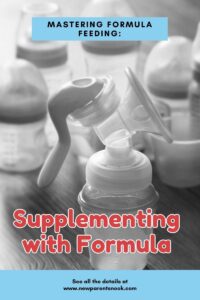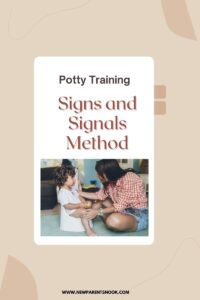Some links on our blog are affiliate links, meaning at no extra cost to you, we may earn a commission if you purchase through them. We participate in the Amazon Affiliate Program, and we recommend products we believe in. Your support helps us keep providing valuable content. Thank you!
Navigating Common Formula Feeding Issues: Solutions and Advice
Formula feeding, while a nutritious alternative to breastfeeding, may sometimes lead to digestive discomforts and other challenges for babies.
Recognizing and addressing these common issues early can help ensure your baby remains happy and healthy.
Here’s a guide to identifying, managing, and when necessary, seeking medical advice for common formula feeding issues.
Gas and Spit-Up
Symptoms: Frequent burping, spit-up, or a bloated stomach.
Solutions:
- Feed in an Upright Position: Keeping your baby somewhat upright during feedings can help reduce air swallowing.
- Burp Regularly: Pause to burp your baby every 2-3 ounces (60-90 milliliters) to release any trapped air.
- Check the Bottle Nipple: Ensure the bottle nipple is the right size; too fast or slow can cause your baby to swallow air.
Constipation
Symptoms: Less frequent bowel movements than usual, hard or pellet-like stools.
Solutions:
- Hydration: Offer a little extra water between feedings (if your pediatrician agrees it’s okay based on your baby’s age).
- Gentle Movements: Moving your baby’s legs in a bicycle motion can help stimulate their bowels.
- Consult Your Pediatrician: They may suggest trying a different formula type that’s easier on your baby’s digestive system.
Allergies and Sensitivities
Symptoms: Rash, diarrhea, excessive fussiness, or a runny nose after feedings.
Solutions:
- Identify the Allergen: Keep an eye out for any reactions following feedings. Cow’s milk protein is a common allergen, but others can include soy, lactose, or certain additives.
- Try a Hypoallergenic Formula: Formulas designed for sensitive tummies or allergies can be more easily digested and less likely to cause an allergic reaction.
- Consult with Your Pediatrician: If you suspect an allergy, your pediatrician can help diagnose and recommend an appropriate formula.
Reflux
Symptoms: Frequent spit-up or vomiting, discomfort lying flat, and restless feeding.
Solutions:
- Elevate After Feeding: Keep your baby upright for 20-30 minutes after feeding to help prevent milk from coming back up.
- Adjust Feeding Amounts: Smaller, more frequent feedings can be easier to digest and less likely to cause reflux.
- Thicken Formula: With your pediatrician’s guidance, you may be advised to slightly thicken the formula with a little rice cereal to help keep it in the stomach.
When to Consult with Your Pediatrician
- Persistent Issues: If any feeding problems continue despite home interventions, or if your baby isn’t gaining weight properly.
- Symptoms of Allergy: Any signs of an allergic reaction should prompt a visit to the pediatrician to determine the cause and find a suitable formula.
- Severe Symptoms: Immediate medical advice should be sought for symptoms like dehydration (few wet diapers), blood in stool, or forceful vomiting.
Tips for Trying a Different Formula Type
- Gradual Transition: If switching formulas, consider doing it gradually by mixing the old and new formulas together, slowly increasing the amount of the new formula over several days.
- Monitor Your Baby’s Response: Pay close attention to how your baby reacts to the new formula and look for improvements or any new concerns.
- Patience is Key: It can take several days to a few weeks for your baby’s system to adjust to a new formula, so patience is essential during this transition period.
Navigating formula feeding challenges requires a combination of attentive care, patience, and sometimes professional guidance.
Most issues can be resolved with simple adjustments to feeding practices or the type of formula.
However, never hesitate to reach out to your pediatrician with concerns or questions to ensure your baby’s health and well-being.







